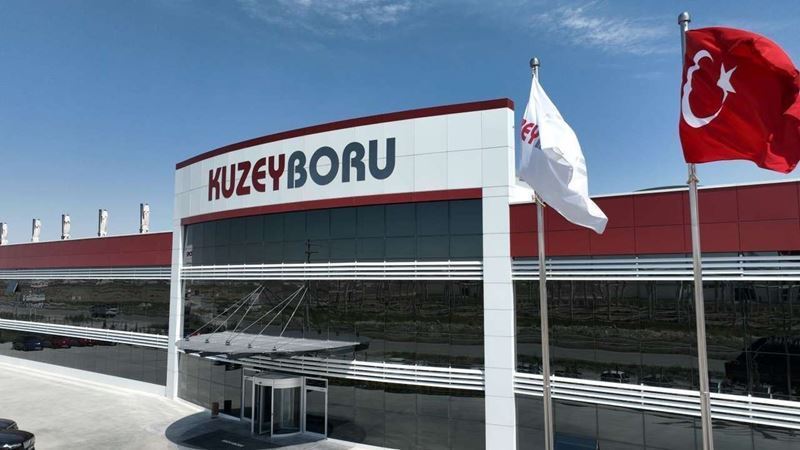Experts say that tensions in the region have completely changed the forecasts for the container market and that extended travel times pose a significant risk to maritime trade.
The tension in the region, which escalated towards the end of last year after the Iranian-backed Houthi rebels in Yemen launched attacks on commercial vessels linked to Israel in the Red Sea, continues to affect the shipping industry.
Shipping companies have shifted or suspended their routes from the Red Sea to the Cape of Good Hope, resulting in a sharp decline in ship traffic in the Red Sea.
According to data from MarineTraffic, a ship tracking and maritime analytics provider, container ship transits in the Red Sea decreased by 55.6 percent from 7,804 in the first quarter of last year to 3,464 in the same period this year.
Liquefied natural gas (LNG) ship transits fell by 84.3 percent in this period and LNG trade in the Red Sea came to a standstill.
Dry cargo ship transits through the region decreased by 20.8 percent and wet cargo ship transits by 21.6 percent, while LPG ship transits decreased by 12 percent, Ro/Ro transits by 46 percent and mixed dry cargo ship transits by 11.8 percent.
Freight rates rise sharply in the first quarter
As tensions in the Red Sea increased and ships turned to the Cape of Good Hope, trade routes lengthened and this situation was reflected as an increase in freight costs.
Niels Rasmussen, Chief Analyst of the Baltic and International Maritime Council (BIMCO), said in a statement to AA correspondent that according to the Baltic Dry Index, freight prices increased by 39 percent on the China-Europe line, 30 percent on the China-Mediterranean line and decreased by 1 percent on the China-US East Coast line in the first quarter of this year compared to the same period of 2023.
Sharing the information that the Baltic Dry Index increased by 84 percent in this period, Rasmussen reported that the Baltic
Clean Tanker Index increased by 18 percent.
Rasmussen stated that the Baltic Dirty Tanker Index decreased by 8 percent in the first quarter compared to the same period of 2023.
Stating that all ship types are avoiding the Red Sea and stopping transit through the Suez Canal and using the Cape of Good Hope, a longer route, Rasmussen shared the following data:
"In January 2024, average weekly transits through the Suez Canal, measured in tons, were 38 percent lower than in January 2023. In March 2024, transits were 51 percent lower than in the same period last year. In March, transits through the Suez Canal were 39 percent lower for dry cargo ships, 48 percent lower for product tankers and 85 percent lower for container ships compared to the same month in 2023."
Ships may have to travel faster
Niels Rasmussen said that demand was quite low before the tension in the Red Sea and that there were no disruptions in meeting the increase in container demand as many new ships were delivered.
Reminding that compared to the container market, the share of dry cargo and tanker ships that normally pass through the Suez Canal is quite low, Rasmussen said, "Due to the tension in the region, ships have changed their routes to the Cape of Good Hope, which has completely changed the forecasts for the container market. Before the attacks, the expectation for 2024 was that the supply-demand balance and freight rates would weaken further. But instead, demand has increased and the supply-demand balance has tightened significantly due to longer voyage distances."
Rasmussen said that freight prices have increased, although not as much as in the Covid-19 period, and this is likely to be reflected in consumer prices.
Emphasizing that the fact that companies have to travel longer by passing through the Cape of Good Hope instead of the Suez Canal poses a significant risk to maritime trade, Rasmussen said, "If the situation develops to the point that all ships stop passing through the Suez Canal, it is likely that the global fleet of ships will have to start sailing much faster in order to continue to carry all sea volumes. This would significantly undermine the ability of the shipping industry to reduce its greenhouse gas emissions."
Import costs increased for many countries
Jan Hoffmann, Head of the Trade Logistics Unit of the United Nations Conference on Trade and Development (UNCTAD), stated that the countries most dependent on the Suez Canal in terms of foreign trade are Sudan, Yemen, Djibouti, Saudi Arabia and Seychelles, and used the following statements:
"These countries depend on the Suez Canal for between one-fifth and one-third of their foreign trade volumes, and trade costs have increased for these countries. Egypt has also been negatively affected as it has lost Suez transit revenue and its transshipment ports are no longer at the crossroads of shipping routes. Likewise, all countries in the Eastern Mediterranean, including Türkiye, suddenly found themselves in a deadlock for all trade from Asia, as ships no longer pass through the Suez Canal but have to go through South Africa and the Strait of Gibraltar, which has increased costs."
Hoffmann explained that import costs have increased for the time being, but if this situation continues, demand will adapt to changing prices in the long run and will lead to changes in trade models.
Noting that it will take time for the currently increasing import costs to be reflected on consumers, Hoffmann concluded his words as follows:
"During Covid-19, we estimated that high freight prices led to inflation of around 1.5 percentage points, but this time the situation is different. The Red Sea tension did not affect all trade routes and freight prices did not rise as much as they did during the pandemic. At the same time, supply was very low during the pandemic, but now many new container ships are coming on stream."









Comments
No comment yet.